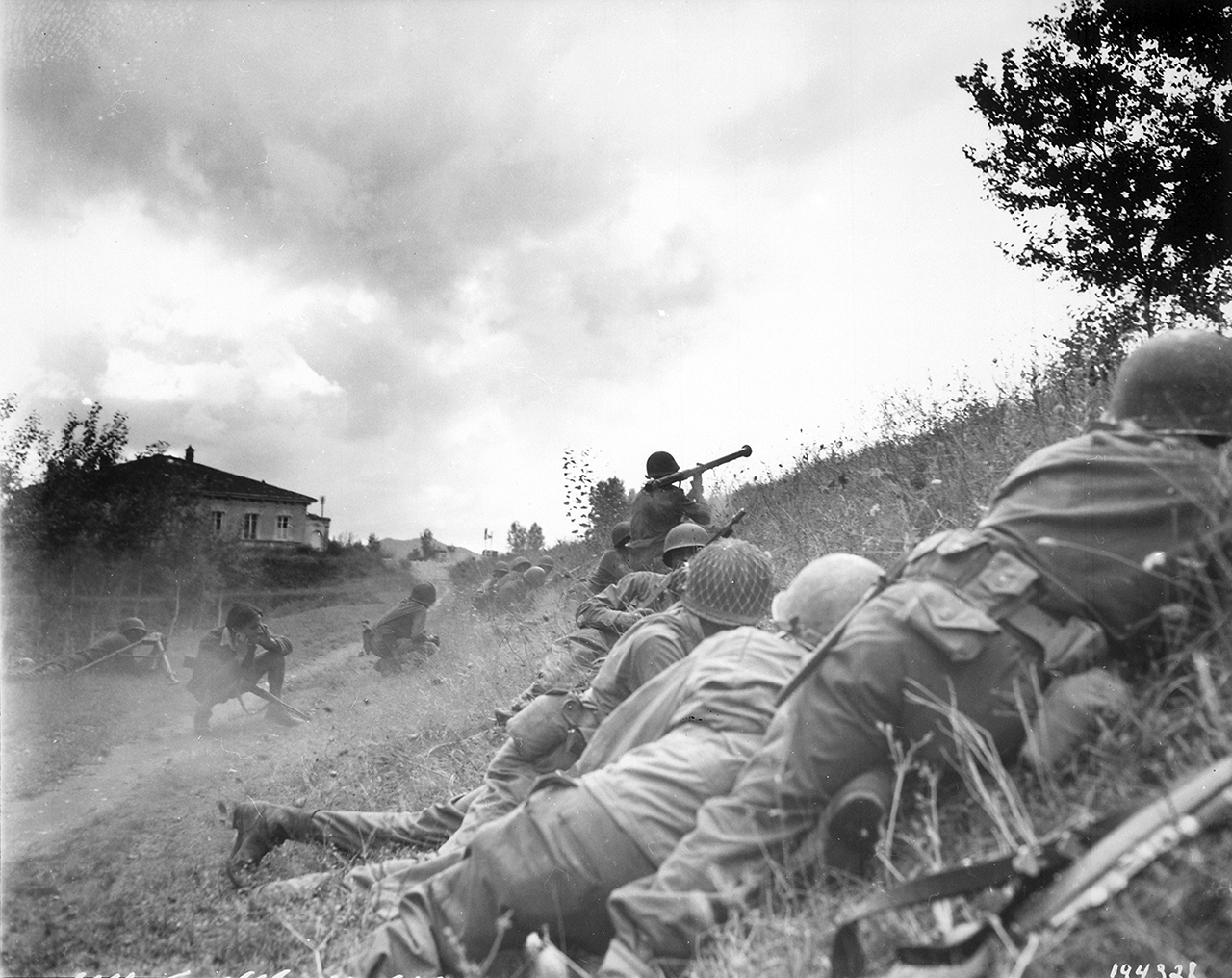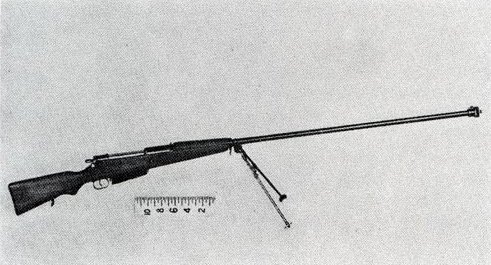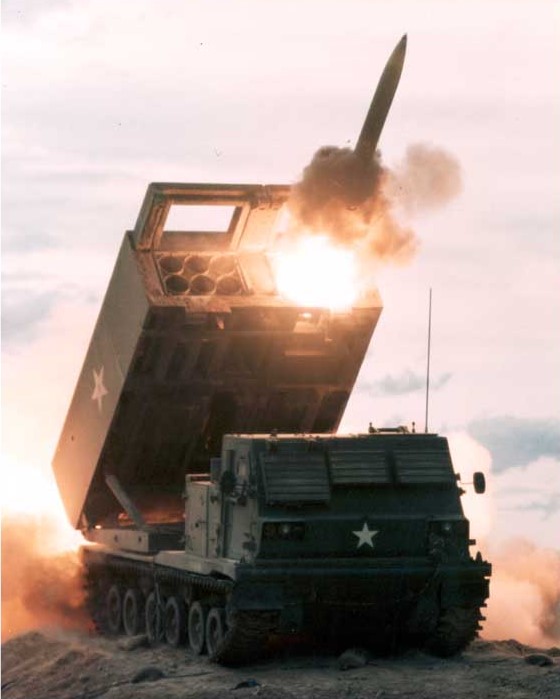|
Rocket (weapon)
In military terminology, a rocket is a self-propelled, generally unguided, weapon-system powered by a rocket engine. Though used primarily as medium- and long-range artillery systems, historically rockets have also seen considerable use as air-to-surface weapons, some use as air-to-air weapons, and even (in a few cases) as surface-to-air devices. Examples of modern surface-to-surface rocket systems include the Soviet BM-27 Uragan and the American M270 Multiple Launch Rocket System. In military parlance, a rocket differs from a missile primarily by lacking an active guidance system; early missiles became known as "guided rockets" or "guided missiles". Some rockets were developed as unguided systems and later upgraded to guided versions, like the GMLRS, and these generally retain the term "rocket" instead of becoming "missiles". Rockets or missiles that travel underwater, like the VA-111 Shkval, are known as "torpedoes", whatever their propulsion system. Early development The ... [...More Info...] [...Related Items...] OR: [Wikipedia] [Google] [Baidu] |
Katyusha Launcher Rear
Katusha or Katyusha is a diminutive of the Russian name Ekaterina or Yekaterina, the Russian form of Katherine or Catherine. Katusha or Katyusha may refer to: Military use * Katyusha rocket launcher, Soviet rocket launcher of World War II, named after the song * Tupolev SB, a Soviet medium bomber of World War II * Soviet K-class submarine, nicknamed Katyusha Other uses * ''Katyusha'' (moth), a synonym of the moth genus ''Lygephila'' in the family Erebidae * "Katyusha" (song), a Russian wartime song about a girl longing for her beloved *Team Katusha, a Swiss professional cycling team *Katusha Demidova, a Russian ballroom dancer *1900 Katyusha 1900 Katyusha ( ''prov. designation'': ) is a stony background asteroid from the inner asteroid belt, approximately 9 kilometers in diameter. It was discovered on 16 December 1971, by Russian astronomer Tamara Smirnova at the Crimean Astrophysica ..., an asteroid *Katyusha, a character in the Japanese anime franchise Girls und Panzer, n ... [...More Info...] [...Related Items...] OR: [Wikipedia] [Google] [Baidu] |
Barrage (artillery)
In military usage, a barrage is massed sustained artillery fire ( shelling) aimed at a series of points along a line. In addition to attacking any enemy in the kill zone, a barrage intends to suppress enemy movements and deny access across that line of barrage. The impact points along the line may be 20–30 yards/meters apart, with the total line length of the barrage zone anything from a few hundred to several thousand yards/meters long. Barrages can consist of multiple such lines, usually about 100 yards/meters apart, with the barrage shifting from one line to the next over time, or several lines may be targeted simultaneously. A barrage may involve a few or many artillery batteries, or even (rarely) a single gun. Typically each gun in a barrage, using indirect fire, will fire continuously at a steady rate at its assigned point for an assigned time before moving onto the next target, following the barrage's detailed timetable. Barrages typically use high-explosive shells, ... [...More Info...] [...Related Items...] OR: [Wikipedia] [Google] [Baidu] |
Bazooka
Bazooka () is the common name for a man-portable recoilless anti-tank rocket launcher weapon, widely deployed by the United States Army, especially during World War II. Also referred to as the "stovepipe", the innovative bazooka was among the first generation of rocket-propelled anti-tank weapons used in infantry combat. Featuring a solid-propellant rocket for propulsion, it allowed for high-explosive anti-tank (HEAT) warheads to be delivered against armored vehicles, machine gun nests, and fortified bunkers at ranges beyond that of a standard thrown grenade or mine. The universally applied nickname arose from the M1 variant's vague resemblance to the musical instrument called a " bazooka" invented and popularized by 1930s American comedian Bob Burns. During World War II, the German armed forces captured several bazookas in early North African and Eastern Front encounters and soon reverse engineered their own version, increasing the warhead diameter to 8.8 cm (amon ... [...More Info...] [...Related Items...] OR: [Wikipedia] [Google] [Baidu] |
Second World War
World War II or the Second World War, often abbreviated as WWII or WW2, was a world war that lasted from 1939 to 1945. It involved the vast majority of the world's countries—including all of the great powers—forming two opposing military alliances: the Allies and the Axis powers. World War II was a total war that directly involved more than 100 million personnel from more than 30 countries. The major participants in the war threw their entire economic, industrial, and scientific capabilities behind the war effort, blurring the distinction between civilian and military resources. Aircraft played a major role in the conflict, enabling the strategic bombing of population centres and deploying the only two nuclear weapons ever used in war. World War II was by far the deadliest conflict in human history; it resulted in 70 to 85 million fatalities, mostly among civilians. Tens of millions died due to genocides (including the Holocaust), starvat ... [...More Info...] [...Related Items...] OR: [Wikipedia] [Google] [Baidu] |
Anti-tank Rifle
An anti-tank rifle is an anti-materiel rifle designed to penetrate the armor of armored fighting vehicles, most commonly tanks, armored personnel carriers, and infantry fighting vehicles. The term is usually used for weapons that can be carried and used by one person, but is sometimes used for larger weapons. The usefulness of rifles for this purpose ran from the introduction of tanks in World War I until the Korean War. While medium and heavy tank armor became too thick to be penetrated by rigid projectiles from rifles that could be carried by a single soldier, anti-tank rifles continued to be used against other "soft" targets, though recoilless rifles and rocket-propelled grenades such as the bazooka were also introduced for infantry close-layer defense against tanks. History The tug of war between armour and projectiles had been developing for a long while among naval vessels, since the advent of the Ironclad. It wasn't until soldiers met armoured vehicles that the ... [...More Info...] [...Related Items...] OR: [Wikipedia] [Google] [Baidu] |
Armour
Armour (British English) or armor (American English; see spelling differences) is a covering used to protect an object, individual, or vehicle from physical injury or damage, especially direct contact weapons or projectiles during combat, or from a potentially dangerous environment or activity (e.g. cycling, construction sites, etc.). Personal armour is used to protect soldiers and war animals. Vehicle armour is used on warships, armoured fighting vehicles, and some mostly ground attack combat aircraft. A second use of the term ''armour'' describes armoured forces, armoured weapons, and their role in combat. After the development of armoured warfare, tanks and mechanised infantry and their combat formations came to be referred to collectively as "armour". Etymology The word "armour" began to appear in the Middle Ages as a derivative of Old French. It is dated from 1297 as a "mail, defensive covering worn in combat". The word originates from the Old French , itself d ... [...More Info...] [...Related Items...] OR: [Wikipedia] [Google] [Baidu] |
Infantry
Infantry is a military specialization which engages in ground combat on foot. Infantry generally consists of light infantry, mountain infantry, motorized infantry & mechanized infantry, airborne infantry, air assault infantry, and marine infantry. Although disused in modern times, heavy infantry also commonly made up the bulk of many historic armies. Infantry, cavalry, and artillery have traditionally made up the core of the combat arms professions of various armies, with the infantry almost always comprising the largest portion of these forces. Etymology and terminology In English, use of the term ''infantry'' began about the 1570s, describing soldiers who march and fight on foot. The word derives from Middle French ''infanterie'', from older Italian (also Spanish) ''infanteria'' (foot soldiers too inexperienced for cavalry), from Latin '' īnfāns'' (without speech, newborn, foolish), from which English also gets '' infant''. The individual-soldier term ' ... [...More Info...] [...Related Items...] OR: [Wikipedia] [Google] [Baidu] |
Tank
A tank is an armoured fighting vehicle intended as a primary offensive weapon in front-line ground combat. Tank designs are a balance of heavy firepower, strong armour, and good battlefield mobility provided by tracks and a powerful engine; usually their main armament is mounted in a turret. They are a mainstay of modern 20th and 21st century ground forces and a key part of combined arms combat. Modern tanks are versatile mobile land weapons platforms whose main armament is a large- caliber tank gun mounted in a rotating gun turret, supplemented by machine guns or other ranged weapons such as anti-tank guided missiles or rocket launchers. They have heavy vehicle armour which provides protection for the crew, the vehicle's munition storage, fuel tank and propulsion systems. The use of tracks rather than wheels provides improved operational mobility which allows the tank to overcome rugged terrain and adverse conditions such as mud and ice/snow better than wheeled vehi ... [...More Info...] [...Related Items...] OR: [Wikipedia] [Google] [Baidu] |
Rocket Artillery
Rocket artillery is artillery that uses rocket explosives as the projectile. The use of rocket artillery dates back to medieval China where devices such as fire arrows were used (albeit mostly as a psychological weapon). Fire arrows were also used in multiple launch systems and transported via carts. First true rocket artillery was developed in India by the Kingdom of Mysore. In the late nineteenth century, due to improvements in the power and range of conventional artillery, the use of early military rockets declined; they were finally used on a small scale by both sides during the American Civil War. Modern rocket artillery was first employed during World War II, in the form of the German Nebelwerfer family of rocket ordnance designs, Soviet Katyusha-series and numerous other systems employed on a smaller scale by the Western allies and Japan. In modern use, the rockets are often guided by an internal guiding system or GPS in order to maintain accuracy. History Early histor ... [...More Info...] [...Related Items...] OR: [Wikipedia] [Google] [Baidu] |
Counter-battery Fire
Counter-battery fire (sometimes called counter-fire) is a battlefield tactic employed to defeat the enemy's indirect fire elements (multiple rocket launchers, artillery and mortars), including their target acquisition, as well as their command and control components. Counter-battery arrangements and responsibilities vary between nations but involve target acquisition, planning and control, and counter-fire. Counter-battery fire rose to prominence in World War I. Counter-battery radar detects incoming indirect fire and calculates its point of origin. That location data can be sent by a communications link to friendly forces, who can then fire on the enemy positions, hopefully before they can reposition (the "scoot" part of shoot-and-scoot tactics). Counter-RAM systems track incoming rocket, artillery, and mortar fire and attempt to intercept and destroy the projectiles or provide early warning to the target area. Background Indirect fire was introduced so that artillery could ... [...More Info...] [...Related Items...] OR: [Wikipedia] [Google] [Baidu] |
Shoot-and-scoot
Shoot-and-scoot (alternatively, fire-and-displace or fire-and-move) is an artillery tactic of firing at a target and then immediately moving away from the location from where the shots were fired to avoid counter-battery fire (e.g. from enemy artillery). Caucasian war The first recorded use of this tactic came from the Caucasian war where the Chechen Naib Talhig of Shali became famous for his shoot and scoot tactics (referred to as Nomadic artillery by Russians) in the 1830-50s. He was according to the Russian historian and professor Nikolay Smirnov one of the first commanders that used this tactic. World War II The need for such tactics in World War II became obvious from the noticeable smoke signature produced by the use of anti-tank infantry weapons such as the German Panzerfaust anti-tank grenade launcher, the American M1 bazooka and its German Panzerschreck derivative anti-tank rocket launchers, and also by the various models of Nebelwerfer and Wurfrahmen 40 Germ ... [...More Info...] [...Related Items...] OR: [Wikipedia] [Google] [Baidu] |

.jpg)



.jpg)


